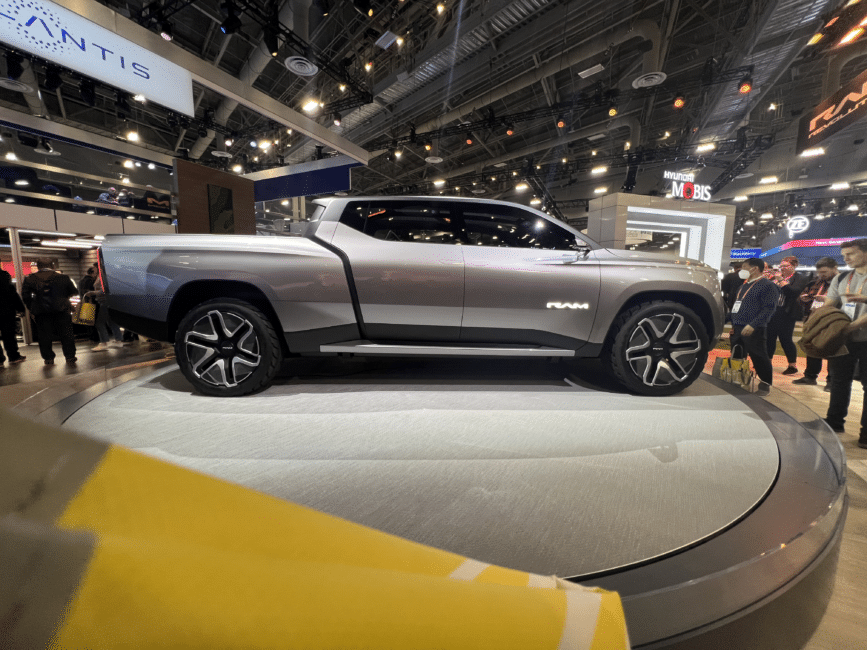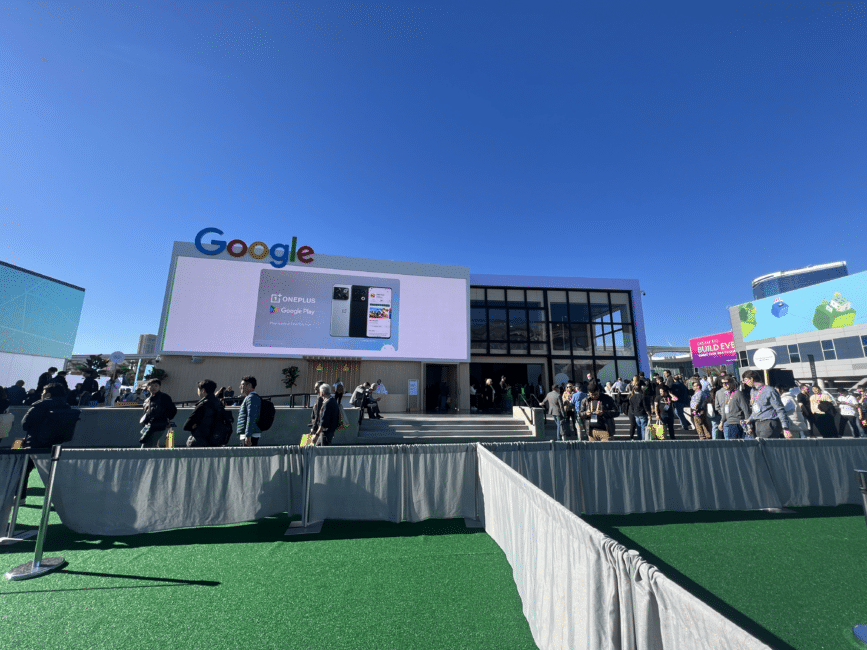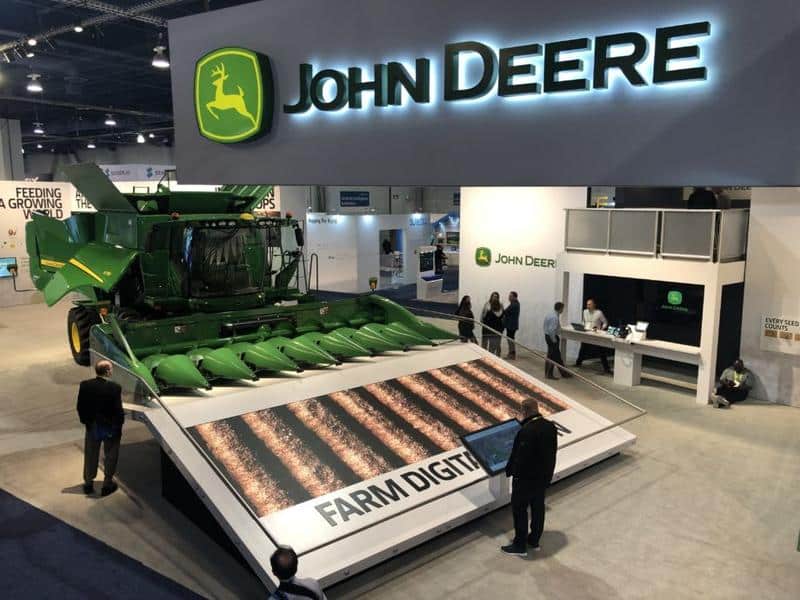CES 2023 Report: Our 5 Key Takeaways from the Consumer Electronics Show
By Bobby Johnson
January 19, 2023
By Bobby Johnson
January 19, 2023
CES (or the Consumer Electronics Show as it used to be called) is one of the largest, most fascinating, and obviously exciting expos for gadget-lovers, tech-enthusiasts, and of course people who just want bigger TVs.
If you weren’t able to make it to CES 2023 this year, worry not: members of the Inspira team hit Las Vegas to see and share the newest gear, systems, and ideas changing the face of the tech industry.
Obviously that was the only reason we went to Las Vegas. And we’ll keep telling you exactly that, even if you question us in separate interrogation rooms.
Attendance was still strong this year, despite the fears of a COVID surge in the news. According to numbers from the Consumer Technology Association (CTA), 115,000 people attended CES this year.
We noticed that big brands were thinner on the ground this year, which could be a case of logistics, inflation, or ROI just not working out in their favor. The impact of a show is naturally going to be less significant for larger companies in general, and an increase in travel, fuel, and other costs may have tilted the decision in favor of not bothering.
However, what we found was that this gave smaller brands and startups the chance to shine a little brighter. Attention at a big show like CES means more to a startup than a goliath brand, and can change the course of the entire company.
Eureka Park, CES’ startup showcase area, was packed with up-and-comers making their mark, like MIT-spawned UltraReality monitor company Breylon.

When it comes to CES, industrial insiders tend to think about big TVs, computer tech, and video games. We were surprised to see how the car industry dominated so much of the space and the experience at CES.
Car technology, autonomous vehicles, connected mobility, electric vehicles, and solar vehicles were all over the floor this year.
Verge showed off its futuristic, cyberpunk TS line of electric motorcycles that charge in less than 40 minutes and have a pretty impressive top speed for an EV.
Qualcomm, one of the biggest names in mobile phone hardware, introduced the Snapdragon Digital Chassis. It isn’t so much a physical car as it is a system that EV manufacturers can use to link all of the computer components and telemetry data that high-tech cars need to function.
Turns out not only is it fun to see the cars (and bikes) of the future, but these experiences with high-ticket items end up being more influential to big spenders than anyone else.

Two brands in particular stuck out to our team, because they offered memorable experiences with a high “wow” factor.
“For me LG Appliances stole the show, just from the experience that they created. They had a massive interactive entrance to their space that was so dramatic.” – Dan Sullivan, Chief Engagement Officer, Inspira Marketing
LG wasn’t just showing off its 97 inch OLED TV. Though, yes, it was doing that as well and it definitely impressed. But our team also loved how comprehensive the LG experience on the CES floor was. We saw a full suite of wireless, connected gadgets, home entertainment, health and wellness equipment, gaming, metaverse, transportation, smart-home showcases, and game-changing cooking gear.
LG wasn’t playing around.
Google’s Android House was another welcome departure from the exhibit floor. They actually set up their experience just outside of the convention center, in a sort of free-standing structure.
In this structure, Google showed off their own smart-home connectivity systems, alongside third-party equipment and apps. From cooking to scheduling, media and even auto connectivity, it made a pretty strong case for the Android ecosystem as a modular smart-home option.

We found a couple brands at CES 2023 to be especially forward-thinking, even though one brand might not be top-of-mind when you think about a shiny, jetpack future.
“It may not seem like an obvious choice but John Deere has revolutionized global farming. They showcased an incredible advance in sustainable farming.” – Dan Sullivan
John Deere’s ExactShot uses robots for precision fertilization systems, all run by an autonomous electric excavator that runs on zero emissions. The impact of this system on farming, our labor force, and the planet itself are immeasurable.
Agriculture is, after all, not only one of our oldest technologies, but still one of our most relevant to daily life. This quantum leap forward in farming tech will impact so many other industries.
The other brand that made a strong case for a more connected tomorrow was Qualcomm. Yeah, they’re getting their second mention, but to be honest they earned it.
Their SnapDragon Satellite system uses satellites to provide coverage for premium cellphones literally across the entire planet, to matter where you are. This is true, global connectivity, not dependent on cell towers, local electrical systems, or power infrastructure of any kind (beyond the charging of the phone itself).
It really could democratize the ability for us all to stay connected on a global level regardless of location.
The most notable trends, the ones we saw everyone in the convention center, were sustainability, connectivity, the metaverse, and virtual tech in general.
Electric vehicles and EV systems promoted sustainability, as well as advanced mobility and connectivity. Most EV brands also focused on the sustainable materials and processes being used throughout manufacturing.
Many brands highlighted opportunities for consumers to recycle, too, becoming a part of the solution as well.
This CES, we witnessed a lot of advancement in solar energy for EVs. This could not only ease concerns about what to do when lithium batteries reach their shelf life, but pull a lot of EVs off a power-grid still largely run off coal power.
We saw one solar electric vehicle called Lightyear, which uses an initial electric charge to start the vehicle, and then is powered via solar panels the rest of the time. Lightyear said after that, the cars required an additional change only after several months of operation.
Plus, you know, it’s pretty sporty and priced to sell at $40,000.
The Metaverse, as usual, made a strong appearance at CES 2023. Metaverse again offered endless technology solutions designed to create significantly enhanced virtual world experiences.
Health and wellness technology made a strong play in 2023, and was a huge focus of many showcases and booths. Wearables and connectivity seemed to be the main through-line, helping people track their movement and bio-data in general.
One trend at CES this year was more subtle, but our team noticed it everywhere. Tech that focused on delivering multisensory experiences seemed to be on everyone’s minds (and tables).
We saw goggles, screens, headwear, and static visual and audio gadgets and systems all designed to add another dimension of sensory experience at live in-person events.
Which makes sense, of course, considering not only the pandemic-era switch to digital experiences but the clear desire consumers are showing for real-world events that distinguish brands from YouTube ads.
That last trend, in particular, caught our eye. To hear more about the merging of real and virtual experiences to create more satisfying hybrid experiences, or just to learn more about how to create experiences like the ones that wowed us at CES 2023, shoot us an email today.